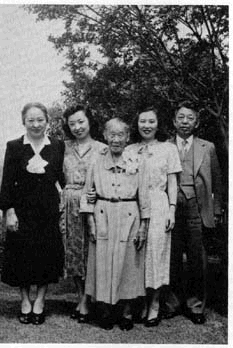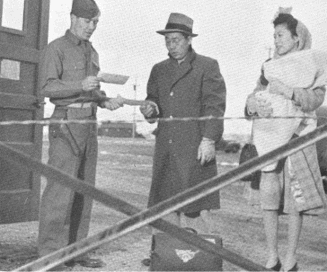
| Resettlement |

| After the War many Japanese Americans returned to the Pacific Coast. However, going back home proved difficult, and many did not actually return to their pre war hometowns. Many Japanese Americans chose not to go back to the West coast at all, and new communities were established in Denver, Minneapolis, Chicago and Cleveland. The immediate postwar period produced much anti-Japanese sentiment. Kane Kozono clamed the he knew, "some people had a lot of trouble when they retuned, I heard that some found their homes burned down when they came back." (Whispered Silences, 231) Many Japanese Americans had to deal with this hatred because most Americans were unable to distinguish between a Japanese national and a Japanese American. Many Japanese Americans were disappointed to discover that the Federal government was unwilling to help them to reclaim their losses. In fact rather than aiding Japanese Americans, between 1944 and 1948 eighty escheat cases were filed against Issei, in which a quarter of a million dollars worth of land and money were taken. (Takashashi, 114.) Some Japanese Americans felt differently about the American government after their incarceration and therefore they made the decision to go back to Japan. |

Hosokawa, pg. 356 Leaving the camp
|
After the initial post war venom many Japanese Americans felt that they were treated as second class citizens, and were often deprived of their civil rights. The Issei and their families had to settle back into normality again, but this was difficult because the country had moved on and changed without them, "they were strangers, once again in a strange land." (Whispered Silences, 233.) Their economic opportunities were limited, and many restaurants and public facilities were barred to anyone of Japanese ancestry. There was a large amount of pressure on the Nisei generation, who had married, and sometimes had families to support, in addition to their parents, who were ready to retire. |
Unfortunately the pre war ethnic economy, that had protected many Japanese Americans from the racism of society, was no longer there to act as a buffer. Since most of the land and businesses that Issei had owned prior to the war had been sold or taken, most had to start again from scratch, in different areas of work. Now there were jobs open to Japanese Americans in different areas, that had not been open before the war. According to Takashashi, the postwar economy created opportunities in semi skilled and skilled occupations. I |

Uchide, Desert in Exile, pg.143 |
California Japanese Americans employed as male laborers rose from 11.5 percent to 17.9 percent. (Takashashi, p 115.) Unfortunately many had to rely on whites to enable them to gain employment, often in menial jobs such as gardening. However, the emphasis on education for subsequent Japanese Americans meant that during the 1950's and 60's many more opportunities were opening up to future generations. |
| The scars of the internment experience are still evident in today's community. There are still large divisions between the Japanese-American community. The bitter resentment towards those of the JACL still runs high and certain sections of the Japanese American population feel that the JACL sold them out. This division has had widespread implications, for example the discussion about the Memorial to the Japanese-Americans, which caused a lot of anger and resentment. So much so that protagonists of one side wrote a paper explaining why they thought that they were justified and why their opponents were wrong. The resentment is unlikely to ever be resolved in the near future, because it was such an intense experience and such feelings will always run high. |